Slathering on the SPF before going out in the sun might be more common these days. But an area that often gets overlooked is the space around the eyes, including the delicate eyelid area. Eyelid skin cancer can start from a longtime mole that changes or from an unusual new growth.
For Frances Amendola, a “beauty mark” on her left eyelid, which had been there since she was a kid, started to change.
“When I got into my teenage and adult years, it started to get darker and extended a little bit out of the eyelid,” Amendola, 50, of Westwood, New Jersey, told TODAY. People would continually point out that her mascara or liner appeared smeared.
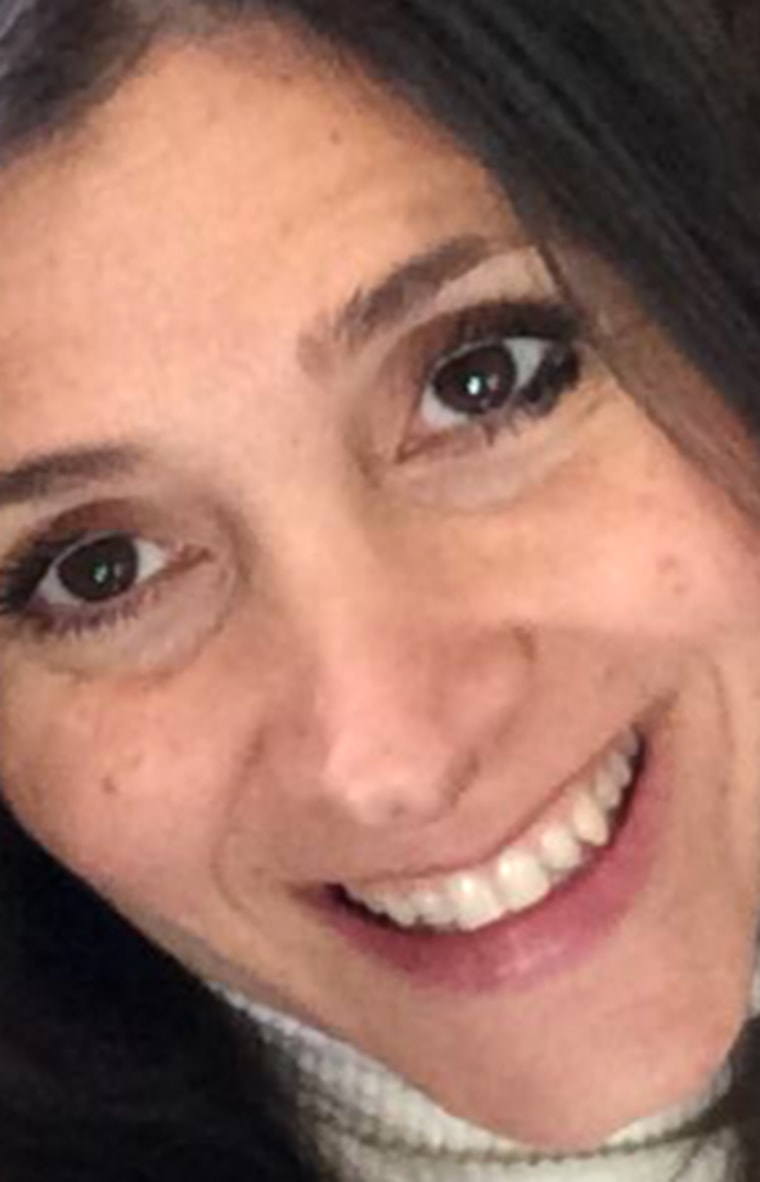
Around 2009, a small lump with an uncomfortable white bump developed inside the corner of Amendola’s lid. She finally saw a local dermatologist, who recommended that she go to a specialist to have a biopsy. But, Amendola had been living with the bump and wasn’t too concerned.
“I’m a nurse myself and I was worried about other patients,” she said.
Several years passed and Amendola was tired of hearing about her "smeared" mascara. Her family was also pressing her to get it checked.
In 2015, she finally contacted a plastic surgeon she knew, Dr. David Bikoff of Hackensack, New Jersey, who also recommended a biopsy.
Amendola thought the appointment would be routine and dissuaded her husband from coming with her. But it wasn't at all what she expected.
“It was very life-changing," she said. "I left the office with a diagnosis of melanoma."
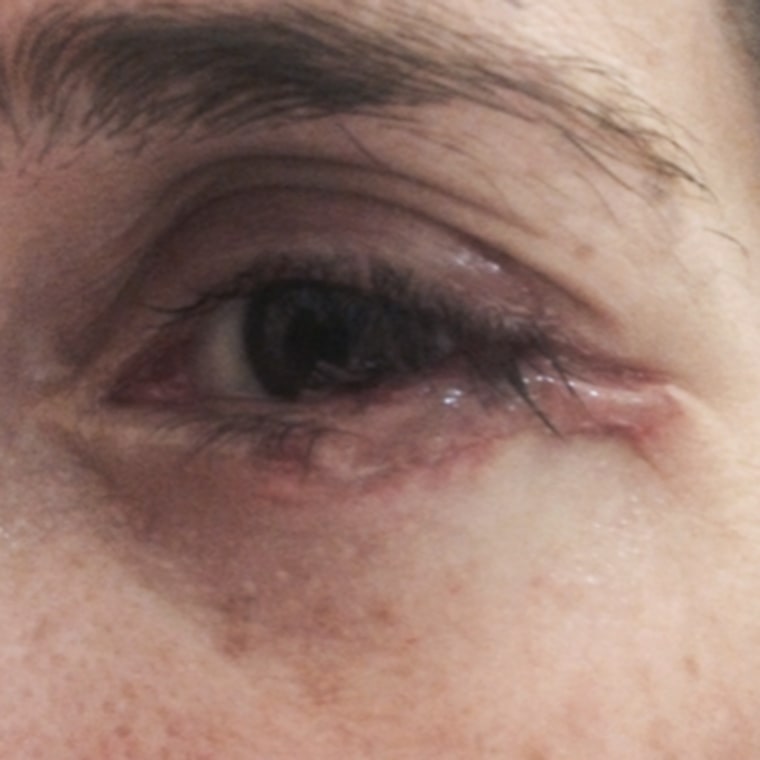
Bikoff referred Amendola to some specialists at New York hospitals, including Dr. Paul Finger, adjunct professor of ophthalmology, Mount Sinai; Dr. Anna Pavlick, medical oncologist, New York Langone Health, and Dr. Harsha Reddy, oculoplastic surgeon at New York Eye and Ear Infirmary of Mount Sinai.
They recommended that she should start with immunotherapy first, to help shrink the lesion before surgery. But she wanted to proceed faster and decided against it.
“I was so fearful of losing my life, I just wanted it to be removed,” Amendola said.
By the time Reddy saw Amendola, the mark was covering about one-third of her eyelid.
“The majority of the lesion was on the lower lid, but it extended around the corner of the eyelid and then up onto the upper lid,” Reddy told TODAY.
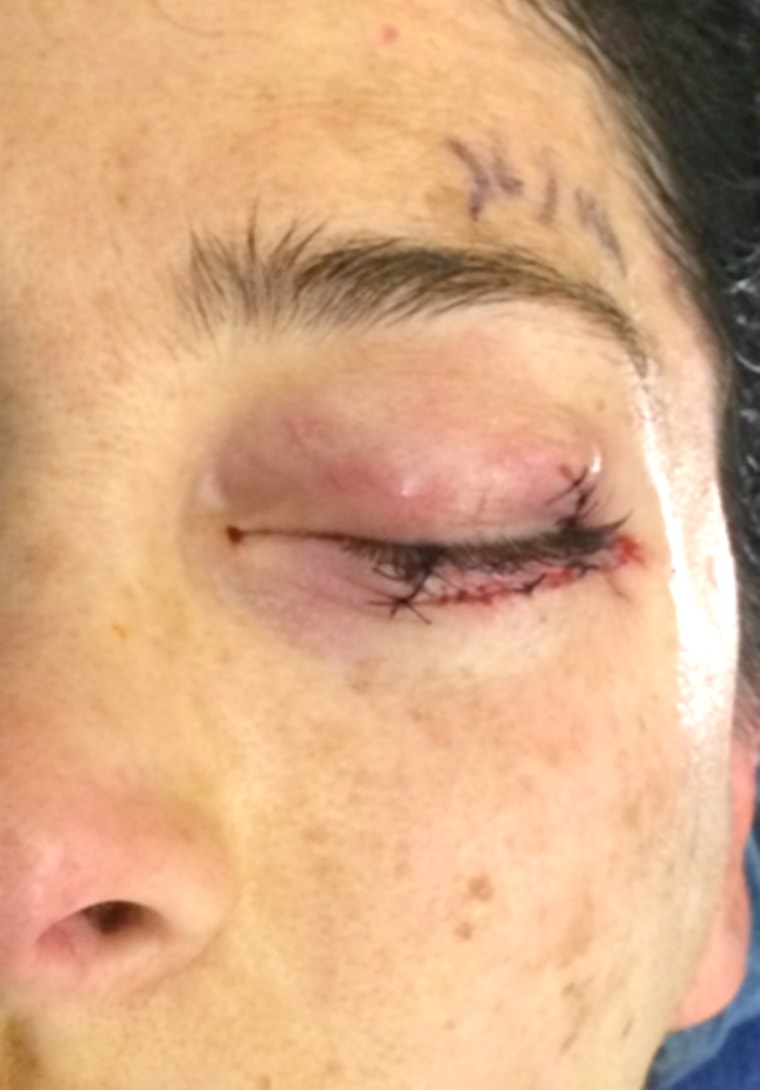
For the procedure, Finger removed the visible portion of the tumor, leaving a clean margin, and then Reddy had to reconstruct Amendola’s eyelid. Because he needed to match the surrounding skin and keep a smooth surface touching her eye, he decided to take a skin graft from Amendola's earlobe and attach it to the bone and the rest of her eyelid. The delicate surgery required three to four weeks of healing and her eye had to be closed shut during that time.
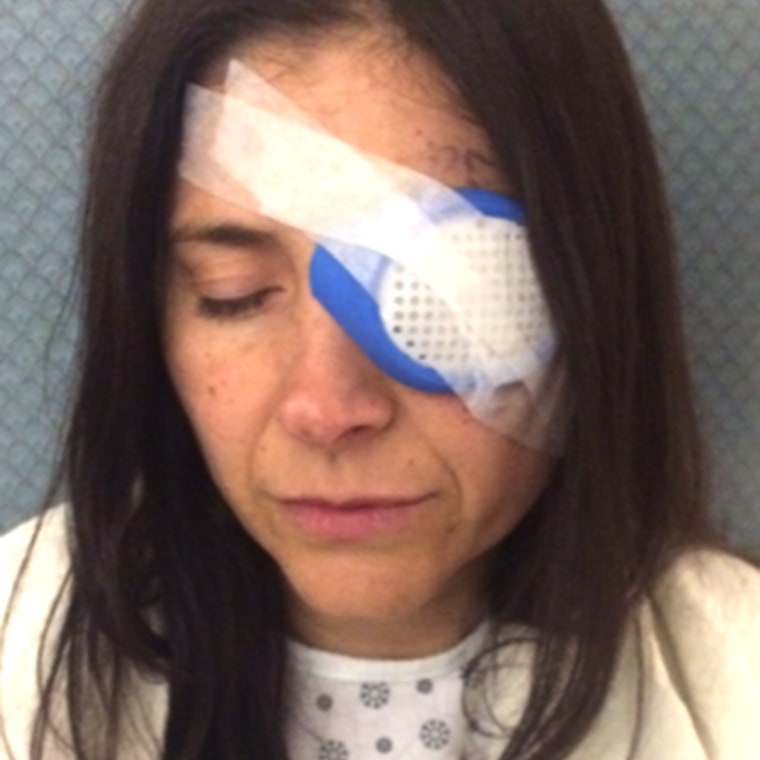
During the first week, Amendola couldn’t even sneeze without the risk of destroying the graft. After the weeks of healing, she could open and shut her eye and within three months, she was able to resume her normal life.
“My eye’s incredible,” she said. “Other than the fact I lost my lashes on the bottom, you would never even know unless you really came up to it and I pointed out that I had a procedure.”
Melanoma, which can be aggressive and more likely to spread to other parts of the body, is more rare with eyelid cancers. Eyelid cancer typically takes the form Irina Leschinsky experienced.
She first noticed a little cyst on her bottom right lid about eight years ago and she visited a doctor, who she said burned off the tip of the lesion without any further tests.
“For the first year, it was fine, but then it started bothering me again,” Leschinsky, 57, of Brooklyn, New York, told TODAY. “It didn’t grow excessively, but it started itching and I couldn’t wear any makeup.”
Then, 2 years ago, an optometrist noticed the lesion and recommended she get a biopsy. She visited Reddy, who gave her the test and found she had a form of skin cancer called basal cell carcinoma.
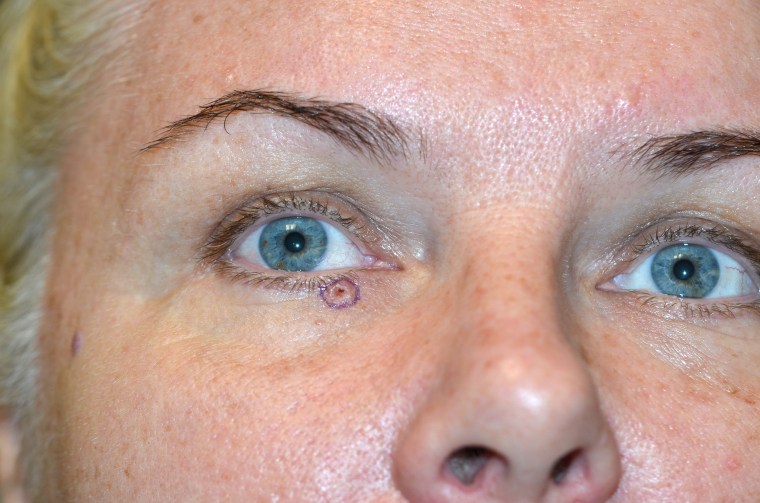
He was able to remove the lesion, which had not grown aggressively, without needing any skin grafts.
Many types of skin cancer exist and several can affect the eyelid area. They are most often sun-related cancers, but a large minority are not.
“Around the eyelids, about 90% are basal cell, 5% are squamous cell carcinomas and then the least common would be melanoma,” he said. “They are all more common in fair-skinned people and in people who had a lot of sun exposure, especially in their childhood and teenage years,” Reddy said.
Both Leschinsky and Amendola admitted they were sun worshippers.
“I love the sun, I love the beach,” Leschinsky said.
Amendola told TODAY that she spent time as a teenager in tanning beds, often without goggles and thought she was invincible due to her olive complexion.
However, as many as half of these skin cancers have nothing to do with this, Dr. David Abramson, chief of ophthalmic oncology, Memorial Sloan Kettering, told TODAY.
“They probably have to do with genetics and other factors that we don’t understand yet,” he said.
In the U.S., skin cancer is the most commonly diagnosed form of cancer, the Centers for Disease Control said. Eyelid cancer accounts for just 5 to 10% of all skin cancer, according to the Skin Cancer Foundation.
Some people are less prone to the condition. Most skin cancer, including any around the eye, is very rare in African Americans and darker-toned complexions, Abramson said, because the pigment melanin in the skin is protective. Still, anyone can get skin cancer no matter which skin tone they have, but fairer complexions are at higher risk.
“The lighter you are, the fewer granules of melanin you have, and the less of the internal protection for your DNA,” Abramson said.
The risk for skin cancer around the eye is the same as anywhere else on the body, but they eyes are always exposed to sunlight and people don’t always wear sunglasses or put sunblock around the eyes, Reddy said. The lower lid tends to be affected more since the eyebrow provides natural shade.
Because it is so exposed, prevention of cancer around the lid isn’t always easy.
“Not being in the sun works best and second best is not being in the sun when the sun is most intense, meaning summer months and the middle of the day,” Abramson said.
Next best is covering the area. Hats help sun that’s coming from above and sunglasses are very effective for blocking out ultraviolet light. But, sunlight can bounce off the ground and can slip between the glasses and the eye, he pointed out.
“The larger the sunglass, the closer it is to your eye, the better it wraps around,” Abramson said, “the better chance it will do at filtering out UV light.”
While there’s undoubtedly a genetic component, Abramson estimated that genetic testing is about 5 years away from being able to screen for skin cancer risk.
The usual methods for treating skin cancer can be effective for eyelid cancers, too, but it can be hard to use some methods in the small, delicate area.
Reddy points out that the two cases illustrate different ways it’s important to be vigilant.
“If something new shows up, this needs to be evaluated,” he said, adding that if someone is unsure of a change in an existing lesion, biopsy is a critical tool.
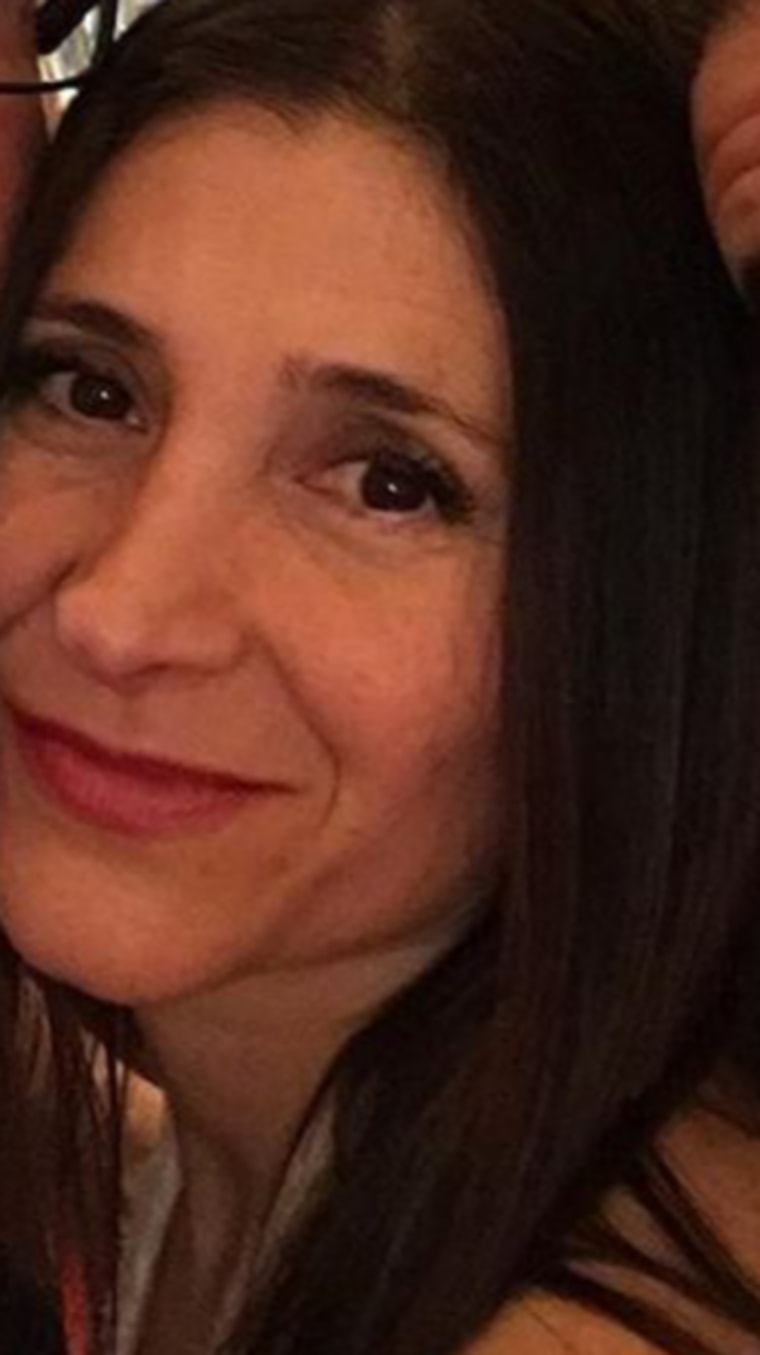
Amendola and Leschinsky both continue to be watchful and not just for themselves. Amendola found a spot on the surface her eye and feared the melanoma had spread, as it can. But she immediately got checked and was thankful it wasn’t cancer; she was afraid another bout would cause her to lose her eye. Her son has a beauty mark on one of his eyelids and she tells him how important it is to wear sunglasses, as well as sunscreen, and get it checked regularly.
Likewise, Leschinsky noticed a small lesion on the other eye, which she “caught in time.” She urges others to immediately have any suspicious marks evaluated.
“I was foolish,” she said. “I probably wouldn’t have had this big a thing if I had taken care of it earlier.”

